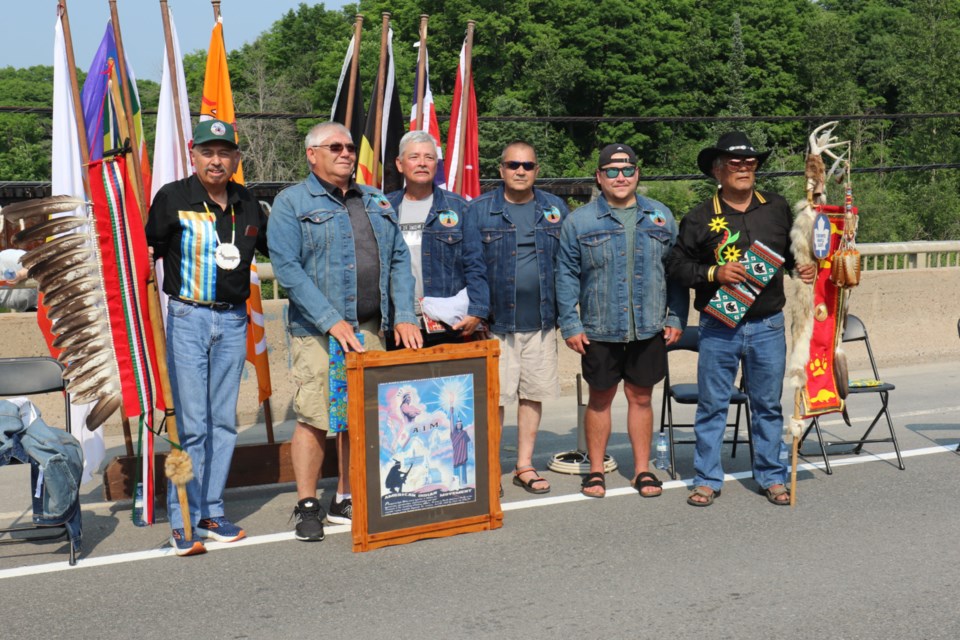EDITOR'S NOTE: This article originally appeared on SooToday on June 22. It is being republished here as part of our 'Year in Review' feature.
The story behind the train bridge bearing the iconic words ‘This is Indian Land’ in Garden River First Nation has finally emerged after five decades.
The community held a 50th anniversary ceremony June 21 to commemorate the painting of the bridge — an act of protest and pride carried out by six young men from Garden River during the rise of a political and spiritual awakening that was happening throughout Turtle Island, all during the height of the American Indian Movement and the occupation of Wounded Knee on Pine Ridge Reservation in South Dakota.
The group dubbed the ‘original six’ — Bob, Darrell, Keith and Willie Boissoneau, along with Andre and Scott Lesage — went to the Garden River train bridge on a dark night in the fall of 1973 with the shared goal of making a statement with the guidance of their ancestors.
Using a board and some rope, the group of young men made a contraption that was used to lower a person from the train bridge in order to paint the now-iconic words on the side of it.
“We did this at great risk, knowing that there was the likelihood that we’d be arrested, or apprehended or charged,” said Darrell Boissoneau during the ceremony, which was held on Highway 17B near the train bridge. “We made a vow back then that we’d never say who did it because of that.”
It was a vow the men would keep for 47 years.
“But after the passing of Willie, and after the passing of our brother Bob, I felt it was important that people needed to know — especially after 50 years,” he continued. “This sign that we see behind us is very iconic in nature, not only for our people here in Garden River and our neighbours, but indeed across Turtle Island, and I dare to say worldwide.”
The significance of the message, which still adorns the bridge to this day, isn’t lost on Garden River First Nation Chief Andy Rickard.
“We have many people that stop here, take pictures here — and it really signifies, to this day, how true this word is,” said Rickard during the commemoration. “This is Indian land.
"It will always be Indian land.”
The six men would eventually repaint the bridge with the help of fellow community member Rick Nolan.
But the message — now a well-known symbol of Indigenous pride and unity across Turtle Island — has always remained the same.
“I think it also lifted up many people throughout that time. We always wanted to encourage our young people, our next generation, to remember they’re not alone in many things that challenge [them],” Darrell Boissoneau said during the ceremony. “You look at the sign, and it gives you courage, bravery, to do what you need to do — and for those young people that are here with us today, we want you to remember this day.
"And don’t let anybody say you can’t do it, because you can do whatever you want to.”
